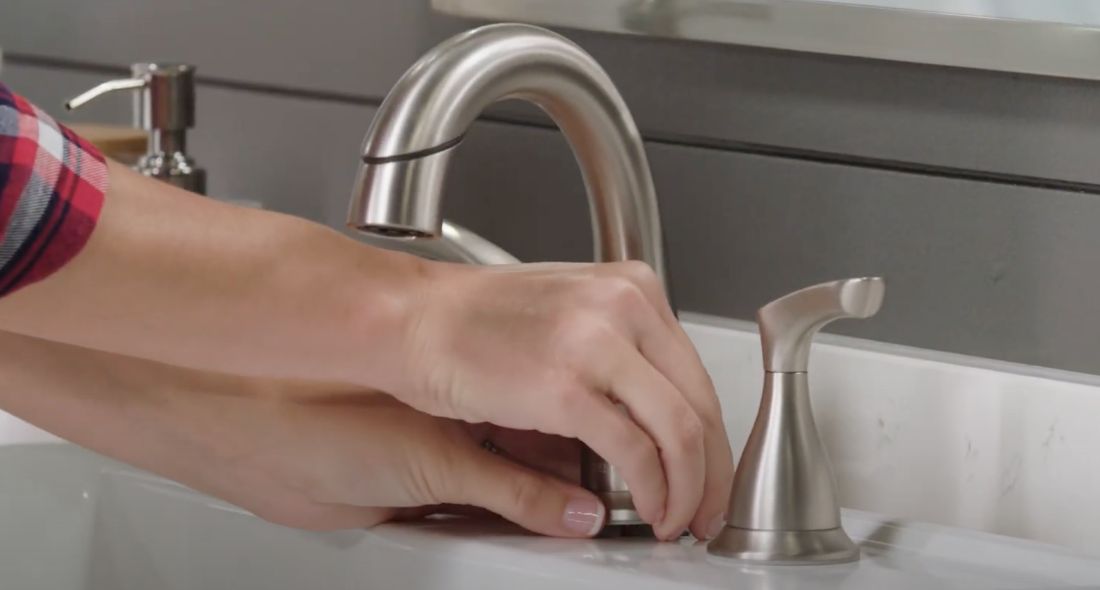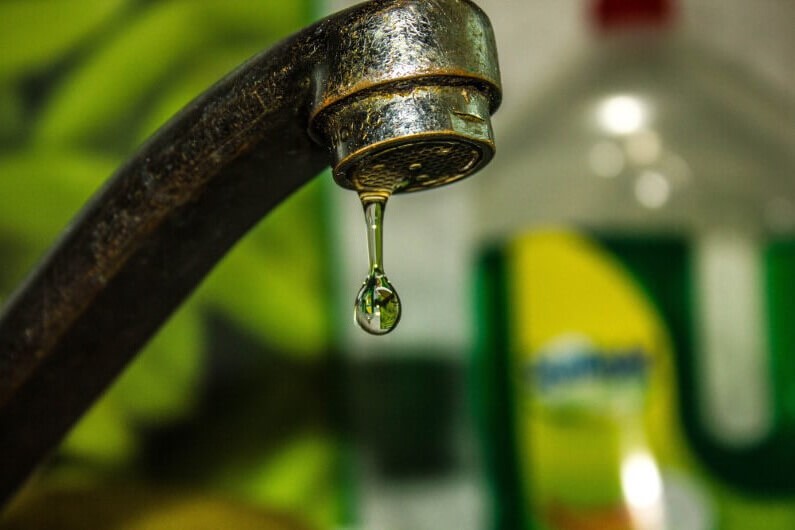An Value of Dealing with a Faulty Faucet
An Value of Dealing with a Faulty Faucet
Blog Article
Are you currently looking for answers involving Why Are My Faucets Dripping (And Can I Fix It Myself)??

Dripping faucets could seem like a minor aggravation, but their effect surpasses just the inconvenience of the sound. From drainage to incurring unnecessary financial prices and wellness risks, disregarding a leaking tap can bring about numerous consequences. In this post, we'll look into why it's critical to resolve this typical household issue without delay and successfully.
Waste of Water
Environmental Effect
Dripping faucets contribute significantly to water wastefulness. According to the Environmental Protection Agency (EPA), a solitary tap leaking at one drip per secondly can waste greater than 3,000 gallons of water per year. This not only stress water sources yet also impacts ecological communities and wild animals dependent on them.
Financial Costs
Enhanced Water Expenses
Beyond the environmental impact, dripping faucets can inflate water bills significantly. The built up wastage in time equates right into higher energy expenses, which might have been avoided with timely repair services.
Potential Property Damage
Moreover, long term leaking can lead to damage to fixtures and surfaces bordering the faucet. Water build-up can trigger staining, deterioration, and also structural issues if left neglected, resulting in added repair service costs.
Health Problems
Mold and Mold Development
The constant visibility of wetness from a trickling faucet develops a perfect setting for mold and mold growth. These fungis not just jeopardize interior air quality however additionally position wellness dangers, specifically for individuals with breathing problems or allergies.
Waterborne Illness
Stationary water in trickling taps can become a breeding ground for microorganisms and various other virus, boosting the threat of waterborne conditions. Impurities such as Legionella germs grow in stationary water, potentially causing severe diseases when consumed or inhaled.
Do it yourself vs. Expert Repair
Advantages and disadvantages of Do It Yourself Repair Work
While some might try to repair a trickling tap themselves, do it yourself repair work include their very own set of challenges. Without appropriate expertise and tools, DIY attempts can worsen the concern or bring about insufficient repair work, prolonging the issue.
Benefits of Employing an Expert Plumber
Employing an expert plumber makes sure that the underlying root cause of the leaking tap is resolved properly. Plumbers have the experience and tools to identify and fix faucet concerns successfully, saving time and lessening the risk of further damage.
Step-by-Step Guide to Taking Care Of a Dripping Faucet
Tools Required
Before trying to fix a trickling tap, gather the necessary devices, including a flexible wrench, screwdrivers, substitute parts (such as washing machines or cartridges), and plumber's tape.
Typical Tap Issues and Their Solutions
Determine the sort of faucet and the details problem creating the drip. Common problems consist of damaged washers, rusty shutoff seats, or damaged O-rings. Refer to supplier instructions or on the internet tutorials for detailed guidance on repair work.
Safety nets
Normal Maintenance Tips
To prevent leaking taps, execute routine maintenance such as cleaning up aerators, evaluating for leakages, and changing worn-out parts promptly. Furthermore, consider installing water-saving devices or upgrading to more efficient components.
Relevance of Prompt Services
Addressing trickling taps as soon as they're discovered prevents more water wastage and potential damages, eventually saving both water and cash over time.
Impact on Home Value
Assumption of Well-Maintained Home
Preserving a residential or commercial property in good condition, consisting of resolving maintenance concerns like dripping taps, enhances its viewed worth and desirability among potential purchasers or lessees.
Influence on Resale Value
Properties with well-kept plumbing components, including taps, command greater resale values in the property market. Resolving leaking taps can contribute to a positive perception throughout property evaluations and settlements.
Ecological Duty
Specific Payment to Preservation
Taking duty for repairing leaking faucets aligns with broader efforts towards water preservation and ecological sustainability. Every person's actions collectively make a significant influence on maintaining valuable resources.
Sustainable Living Practices
By focusing on prompt fixings and embracing water-saving practices, individuals add to sustainable living techniques that benefit both present and future generations.
Verdict
Dealing with a trickling tap goes beyond simple benefit; it's an essential action toward preserving water, lowering monetary prices, and protecting wellness and building. Whether with do it yourself repair services or professional help, acting to deal with trickling taps is a tiny yet impactful means to advertise liable stewardship of sources and add to a much healthier, extra lasting future.
How to Fix a Leaky Faucet: Step-by-Step Repair Guide
A leaky faucet may seem like a simple annoyance, but if it's not fixed promptly, that leak could cost hundreds to potentially thousands. From water damage to mold, mildew, and high water bills, even a tiny leak can be catastrophic if left unattended. Damage like this can even affect the overall value of your home, so it's important to take the right approach for leaky faucet repair. You may need the help of a plumber in some cases, but we've got a few tips you can try on how to fix a leaky faucet before calling the pros.
Four Faucet Types
When you're learning how to fix a leaky faucet, the first step is knowing what kind of faucet you're working with! There are four common types.
Cartridge Faucets
Cartridge faucets come in one- or two-handled varieties. In one-handled cartridge faucets, hot and cold water combines in a single cartridge. In the two-handled versions, hot and cold water are controlled separately and mixed in the faucet.
Ball Faucets
Ball faucets have a single lever you push up and down to adjust the pressure and rotate to change the temperature. A slotted metal ball controls the amount of water allowed into the spout.
Compression Washer Faucets
They're the oldest type of faucet, but they're still used in many homes — especially older ones. Compression faucets have two separate handles that, when turned, raise or lower the washer that seals a water valve. This valve stops water from flowing through the faucet when it is turned off.
Disc Faucets
Disc faucets rarely need to be repaired due to their maintenance-free design. The water flow is controlled by two discs — the upper one raises and lowers against a fixed lower disc, creating a watertight seal. If your disc faucet starts leaking, you may need to replace the seals or clean residue buildup from the inlets.
Fixing a Leaky Faucet
Step 1: Turn Off the Water
Whether you're learning how to fix a leaky bathtub faucet or how to fix a leaky kitchen faucet, always turn off the water supply to your working area when you're fixing a leak. The last thing you want is a flood added to your list of things to fix.
Look for the shutoff valves below your sink or around the tub and turn them clockwise to stop the water flow. If your faucet doesn't have shutoff valves, you may need to turn off the water for the whole house. Check to make sure it's off by turning the faucet on. If nothing comes out, you're ready to start the repair.
Step 2: Take Apart the Faucet
How you disassemble your faucet depends on the type of fixture you have. You can use a flathead screwdriver to remove the caps on top of the handle or handles for cartridge and compression faucets. Inside, you should see handle screws. Unscrew these with a screwdriver to remove the handle.
Disc- and ball-style faucets will typically have an inlet screw near the handle, and removing that will reveal the interior of the faucet.
Detach the Valve Stem
For cartridge- and compression-style faucets, you'll see the inner valve stem or cartridge once you remove the faucet handles. If you have a compression faucet, unscrew the brass valve stem. If you have a cartridge faucet, pull out the cartridge. If your cartridge has been in place for a while, it may require some tools or extra force to remove it due to mineral deposits.
Examine and Replace Parts
Once you've removed the parts, check them out to confirm what needs to be replaced. You may see corroded rubber washers, O-rings, stems, or cartridges. On a ball-style faucet, check the seats and springs for damage.
If you need to repair a leaky disc faucet, check the inlet and seals on the lower disc.
Once you determine what parts must be replaced, visit your local hardware store. Bring the damaged parts with you to ensure you can purchase the correct components to replace them.
Clean Valves and Faucet Cavity
If you've removed a stem or cartridge, you may notice mineral buildup in the faucet's threads. Use white vinegar to clean the valve seat by soaking it for a few minutes, then scrub it away with a soft toothbrush and rinse with warm water. You can also clean the interior of the faucet in the same way.
Reassemble the Faucet
Once your faucet is cleaned and the required parts have been replaced, it's time to reassemble it. Put the pieces back together and slowly turn the water supply back on. Doing this slowly is crucial because too much initial water pressure can damage the new hardware you've just installed.
https://homewarranty.firstam.com/blog/how-to-fix-leaky-faucet

As a keen person who reads about , I was thinking sharing that piece of content was essential. If you enjoyed reading our post kindly remember to share it. We truly appreciate your readership.
Report this page